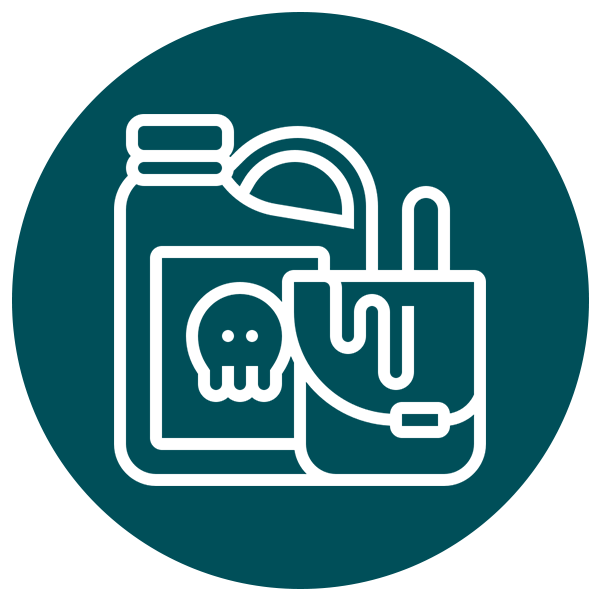MEASUREMENT IN REAL TIME!
The amperometric control
Amperometric control is a sophisticated approach to measuring and controlling chlorine levels in swimming pool water.
MEASUREMENT IN REAL TIME!
The amperometric control
Amperometric control is a sophisticated approach to measuring and controlling chlorine levels in swimming pool water.
What is amperometric control?
Amperometric control is an advanced method of measuring and controlling chlorine levels in swimming pool water. Chlorine is a powerful disinfectant used to eliminate bacteria, viruses and other contaminants that could affect swimmers’ health. However, to be effective, chlorine must be maintained at an optimum level. Too much chlorine can cause skin irritation and respiratory problems, while too little chlorine can allow germs to proliferate.
How does amperometric control work?
Amperometric control is based on the use of a special probe that measures the level of free chlorine in the pool water accurately and continuously. The level of free chlorine is measured in ppm (parts per million). Free chlorine is the active, effective form of chlorine that remains after disinfection.

What is amperometric control?
Amperometric control is an advanced method of measuring and controlling chlorine levels in swimming pool water. Chlorine is a powerful disinfectant used to eliminate bacteria, viruses and other contaminants that could affect swimmers’ health. However, to be effective, chlorine must be maintained at an optimum level. Too much chlorine can cause skin irritation and respiratory problems, while too little chlorine can allow germs to proliferate.
How does amperometric control work?
Amperometric control is based on the use of a special probe that measures the level of free chlorine in the pool water accurately and continuously. The level of free chlorine is measured in ppm (parts per million). Free chlorine is the active, effective form of chlorine that remains after disinfection.

Unlike amperometric measurement, ORP does not, strictly speaking, quantify chlorine concentration. It measures all the oxidising products in the water. There is therefore no selectivity. What’s more, it is highly dependent on water quality, pH, temperature and stabiliser.
In other words, ORP measurement is used to assess the health of the water, not the level of free chlorine actually present in the water.
Unlike amperometric measurement, ORP does not, strictly speaking, quantify chlorine concentration. It measures all the oxidising products in the water. There is therefore no selectivity. What’s more, it is highly dependent on water quality, pH, temperature and stabiliser.
In other words, ORP measurement is used to assess the health of the water, not the level of free chlorine actually present in the water.
The advantages of amperometric control

Sharp treatment
Amperometric control provides real-time measurement, ensuring precise, constant control of the chlorine level in the pool water. This prevents sudden fluctuations in chlorine concentration and ensures effective disinfection.

Automation
Amperometric regulation systems are generally automated, which means that they adjust automatically to the actual needs of the pool. This reduces human intervention to a minimum.

Chemicals savings
With a chlorine dosing system, amperometric regulation eliminates the risk of overdosing and optimises chemical consumption. Pool maintenance costs are reduced.

Bathers safety
Thanks to an optimum chlorine level, the water is healthy and balanced for the comfort of bathers, who are less likely to experience skin irritations or itching due to poor water quality.
The advantages of amperometric control

Sharp treatment
Amperometric control provides real-time measurement, ensuring precise, constant control of the chlorine level in the pool water. This prevents sudden fluctuations in chlorine concentration and ensures effective disinfection.

Automation
Amperometric regulation systems are generally automated, which means that they adjust automatically to the actual needs of the pool. This reduces human intervention to a minimum.

Chemicals savings
With a chlorine dosing system, amperometric regulation eliminates the risk of overdosing and optimises chemical consumption. Pool maintenance costs are reduced.

Bathers safety
Thanks to an optimum chlorine level, the water is healthy and balanced for the comfort of bathers, who are less likely to experience skin irritations or itching due to poor water quality.
Using an amperometric regulator with a chlorinator
- Connected electronically to the chlorinator, the amperometric probe will measure the level of free chlorine in the pool. The chlorine production of the device will be adjusted if necessary. Specially developed for salt electrolysis, the Salt chlorine sensor measures the level of free chlorine in the water with great accuracy.



Using an amperometric regulator with a chlorinator
- Connected electronically to the chlorinator, the amperometric probe will measure the level of free chlorine in the pool. The chlorine production of the device will be adjusted if necessary. Specially developed for salt electrolysis, the Salt chlorine sensor measures the level of free chlorine in the water with great accuracy.



Using an amperometric regulator with a dosing system
- measured and the set point. The Fresh probe is fitted to amperometric control devices dedicated to fresh water.






